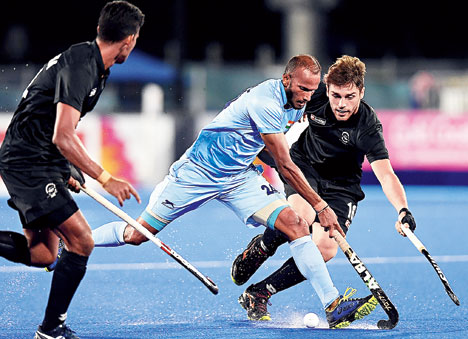The 1,600m (1.6km or one mile) running test has become an integral part of performance test batteries for those playing games like football (or soccer) and hockey. The test is usually performed on a turf or a field 80m to 100m in length. It is unique and challenging due to the total duration, as athletes often tend to perceive this test as long endurance work and lose sight of speed.
Here’s a broad guide for both coaches and players in these intermittent sports. The training information is divided into two categories — for Athlete 1, who lacks work capacity/endurance, and for Athlete 2, who lacks speed.

Athlete 1
This person lacks work capacity and endurance — that is, lacks aerobic fitness. Such people are generally characterised by high resting heart rates of more than 65 beats per minute, take more than six minutes to run 1,600m, and need longer recovery time. These athletes might need four to six weeks in a cycle to develop work capacity. Here are some key strategies for building extensive work capacity.
♦ Extensive intervals: This involves running intervals of more than two minutes at 70-80 per cent of maximum speed (based on 1,600m test) interspersed with some active recovery (length depending on the athlete; longer recovery for poorly-conditioned athletes). Rest period should ideally be less than work time (total time spent on tempo runs 30-40 minutes, two to three times a day, depending on the athlete). Tempo runs are faster than jogging pace but not too fast.
A heart rate monitor would be useful in determining the rest periods between bouts of work intervals; recovery heart rate of 50bpm can be a good indicator of aerobic fitness.
♦ Exceeding the test distance: Exceeding the distance (>1,600m) helps athletes overcome the psychological barrier associated with distance and also builds foundational endurance, particularly cardiac output. However, running more than 3km should be avoided as it can alter stride mechanics for some athletes.
♦ Base strength: Basic full body strength exercises with controlled tempo will help in building peripheral adaptation (oxygen supply to working muscles). A combination of upper body, lower body and trunk exercises done alternately with rest can be useful in building work capacity. The rep range should be between eight and 12, progressively building strength.

Athlete 2
This person lacks speed, but has good foundational endurance and work capacity. Often these athletes will also have below-par scores in short, sub-40m speed tests. They lack the ability to apply force quickly.
♦ Intensive intervals: This involves repeated 100m runs within 17-22 seconds interspersed with longer recovery (30-40 seconds). Total distance covered in a session can be 1,000m to 1,600m. Some football players, usually midfielders, may need longer sessions going up to 2,400m. However, gradual progression is necessary without significantly altering speed for each repetition.
♦ Short intervals: This involves repeated 50m and 25m shuttles. A total distance of 275m to 300m can be covered in a minute. Shorter surface area shuttles of less than 30m can be more challenging due to frequent changes of direction. Rest between sets will be determined by the athlete’s conditioning level.
Anything from one to three minutes can be used, or a recovery heart rate of 50bpm if using a heart rate monitor. Because of its impact on the joints, the volume of short shuttles in a session should be kept low, less than 1,000m, in total, and the focus should be more on speed.
♦ Acceleration, deceleration and progressive change of direction: Short starting runs of less than 30m along with progressive direction change (45, 60, 90, 180 degrees) work can complement the speed work. However, the volume should be low and the recovery should be long with work-to-rest ratio of 1:5 to 1:7.
♦ Power: Progressive power work including medicine ball, jumps and hops will be useful for avoiding running injuries and enhance performance in a 1,600m test because of the involvement of reactive tendon training.
Time and distance should be specific to an athlete’s work capacity and speed. Therefore, doing the test every five to six weeks will provide valuable feedback regarding time and speed. An individual’s training should be based on his speed.
For example, if an athlete completes 1,600m in five minutes, then the maximum speed for that distance will be 19.2kmph. Therefore, his training should be based on that speed (extensive, that is, at or below the speed; and intensive, that is, at or above the speed).
Remember, taking the 1,600m test like track athletes running around a 400m track may not guarantee a better score for your sport as most intermittent sports require changes of direction. So, this test should be performed on an 80m to 100m turf or field, running back and forth.
Finally, do keep a track of your recovery heart rate, particularly with the intervals.
Kaushik Talukdar is the founder and CEO of Athlete Institute. He tweets @CoachKaushik











